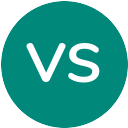The Best Alternatives to Bootstrap for Web Development
By Gregor K. published about 2023-02-04 23:18:21
Are you looking for alternatives to the popular web development tool Bootstrap? If so, then look no further! We have compiled a list of the most popular and user-friendly websites that offer similar features to Bootstrap. In this article, we will provide an overview of each website, discuss their features and compare them to Bootstrap. We'll also provide a few tips on how to decide which one is the best fit for your development needs. So, let's get started!
Bootstrap
Bootstrap is an open source front-end framework for creating responsive, mobile-first websites and web applications. Built with HTML, CSS, and JavaScript, Bootstrap provides a comprehensive collection of components, utilities, and plugins for building modern websites and applications.
Features
- Responsive design
- Pre-built components and plugins
- Cross-browser compatibility
- Easy integration with JavaScript libraries
- Customizable themes and layouts
Table of Contents
- 1Introduction
- 2Bootstrap Alternatives
-
3Head-to-Head Comparisons
- 3.1Bootstrap vs Django
- 3.2Bootstrap vs Adobe Dreamweaver
- 3.3Bootstrap vs Drupal
- 3.4Bootstrap vs Express
- 3.5Bootstrap vs Figma
- 3.6Bootstrap vs Gatsby
- 3.7Bootstrap vs GitHub
- 3.8Bootstrap vs HTML5
- 3.9Bootstrap vs Font Awesome
- 3.10Bootstrap vs Sass
- 3.11Bootstrap vs Unicorn
- 3.12Bootstrap vs Venture Capital
- 3.13Bootstrap vs WordPress
- 3.14Bootstrap vs Webflow
- 3.15Bootstrap vs Wix
- 3.16Bootstrap vs CMS
- 3.17Bootstrap vs Google Chrome
- 3.18Bootstrap vs Three
- 3.19Bootstrap vs Joomla
- 3.20Bootstrap vs AdminLTE
- 4Bootstrap History
- 5Bootstrap Status
- 6Comments
- 7Further Links
Bootstrap Alternatives
Foundation
Both Bootstrap and Foundation are front-end frameworks offering responsive design and mobile-first approach.
Foundation is more advanced than Bootstrap, offering more options for web developers, such as a Sass-based grid system and more flexibility.
Gumby
Both Bootstrap and Gumby offer a responsive grid system.
Gumby offers more options for customizing the framework, such as a customizable grid system and custom Sass variables.
Materialize
Both Bootstrap and Materialize offer mobile-first and responsive designs.
Materialize is built with Material Design principles and is more focused on creating mobile-friendly components.
Pure
Both Bootstrap and Pure are lightweight frameworks.
Pure is much more lightweight than Bootstrap, offering only a grid system and basic styling.
Semantic UI
Both Bootstrap and Semantic UI offer responsive design.
Semantic UI offers much more customization options than Bootstrap, such as a powerful theme engine and more components.
UIKit
Both Bootstrap and UIKit offer responsive design and mobile-friendly components.
UIKit is much more lightweight than Bootstrap and offers a unique set of components, such as a powerful animation library.
YAML
Both Bootstrap and YAML offer a responsive grid system and mobile-first approach.
YAML is much more lightweight than Bootstrap and offers more options for customization, such as a flexible grid system and custom classes.
Django
Both Bootstrap and Django are open-source web development frameworks.
Bootstrap is a front-end framework used to create responsive websites, while Django is a backend framework written in Python used for developing complex web applications.
Adobe Dreamweaver
Both Bootstrap and Adobe Dreamweaver are web design tools.
Bootstrap is an open source tool with a library of HTML, CSS, and JavaScript components while Adobe Dreamweaver is a more comprehensive platform that includes coding tools, design elements, and other features.
Drupal
Both Bootstrap and Drupal are content management systems that can be used to build websites.
Bootstrap is a front-end framework for quickly building responsive web pages with HTML, CSS, and JavaScript, while Drupal is an open source content management system designed for rapid development of complex websites.
Express
Both websites provide development frameworks for creating web applications.
Bootstrap uses HTML and CSS based templates to build responsive sites, whereas Express is a web application framework for Node.js.
Figma
Both Bootstrap and Figma are web-based design tools.
Bootstrap is used for front-end development, while Figma is a UI and UX design platform.
Gatsby
Both Bootstrap and Gatsby are open-source web development frameworks.
Bootstrap is a front-end development framework while Gatsby is a static site generator.
GitHub
Both Bootstrap and GitHub are web-based software development platforms.
Bootstrap is a front-end framework for creating webpages and apps, while GitHub is a version control system for managing and tracking changes to code.
Bootstrap Head-To-Head
When it comes to coding and designing a website, Bootstrap is a popular choice among developers. But it is not the only option available and there are other website builders that can provide an equally good user experience. This article will compare Bootstrap with several other alternatives and provide an overview of their features, so that readers can make an informed decision about which one is best for their needs. We'll discuss the pros and cons of each and how they stack up against one another. By the end of this comparison, you should have a better understanding of what makes each unique and be able to choose the right website builder for your project.
Bootstrap and Django are two popular web development frameworks with different approaches when it comes to developing websites. Bootstrap is a front-end framework that focuses on the design of a website, while Django is mainly used for back-end development. Bootstrap is based on HTML, CSS and JavaScript, allowing developers to quickly create responsive websites with a mobile-first approach. It also provides many useful features such as pre-built components, utility classes and powerful plugins. On the other hand, Django is a Python-based web framework that takes care of the back-end tasks related to building websites. It provides an easy way to create complex database-backed websites and applications with its own Object Relational Mapper (ORM). In addition, Django enables developers to easily add authentication, authorization and data validation in their projects using its built-in libraries. Both Bootstrap and Django offer powerful tools for creating amazing websites but they serve different purposes; Bootstrap being more focused on the design while Django taking care of the back end development tasks.
Bootstrap and Adobe Dreamweaver are both website creation tools that offer varying levels of customization and ease of use. Bootstrap is open source and offers a straightforward way to quickly create a website, whereas Adobe Dreamweaver provides more extensive design capabilities. Bootstrap is a front-end framework for web development, used for designing responsive websites that look good on any device. It includes HTML and CSS templates for typography, forms, buttons, navigation, tables, and more. It also has built-in support for JavaScript plugins and components allowing users to easily extend their websites with additional features. Adobe Dreamweaver is an integrated development environment (IDE) that allows for the creation of complete websites using HTML, CSS, JavaScript, PHP, ColdFusion and other technologies. It provides powerful coding tools such as code hinting and syntax highlighting, live view debugging and integration with Adobe Creative Cloud services like Photoshop or Illustrator. It also has advanced features such as real-time previews of pages in multiple browsers simultaneously. In addition to creating webpages from scratch it enables users to quickly modify existing designs by dragging elements onto the page or customizing them in the code editor.
Bootstrap and Drupal are two popular web development platforms. Both provide developers with a wide range of tools and features that allow them to create websites quickly and easily. Bootstrap is a front-end framework that helps developers quickly create responsive websites with HTML, CSS, and JavaScript. It includes pre-built components such as buttons, forms, and navigation bars that can be easily customized to fit the needs of the website. Bootstrap also provides several layout options for developers to choose from, including fluid grids, flexible images, and more. Drupal is an open source content management system (CMS) that allows website owners to manage content on their site without having to write code. It comes with a variety of modules and themes that make it easy to customize the look and feel of a website as well as its functionality. Drupal also has built-in security features that enable users to protect their data from potential threats. With Drupal's user-friendly interface, creating content for a website is quick and easy. Both Bootstrap and Drupal offer powerful tools for web development but serve different purposes. Bootstrap is ideal for creating responsive websites with HTML, CSS, and JavaScript while Drupal is the perfect CMS solution for managing content without writing code.
Bootstrap and Express are both popular web development frameworks that allow developers to quickly create user-friendly websites. Bootstrap is an open source, front-end framework that provides reusable HTML and CSS-based designs for developing responsive web applications. It focuses on mobile first development, and its components include a grid system, typography, buttons and forms. Expression is a Node.js based back-end web application framework which provides a robust set of features for web and mobile applications. Express provides out of the box features such as routing, view rendering with templates such as Pug or EJS, middleware support, file uploads and more. Bootstrap requires knowledge of HTML, CSS and JavaScript whereas Express requires knowledge of Node.js and server side scripting languages such as JavaScript or TypeScript in order to make the most of its features. Both frameworks have robust documentation so developers can easily find answers to any questions they may have.
Bootstrap and Figma are both web-based design tools used by designers to create websites, user interfaces, and other digital products. They both offer a variety of features to help make design faster and more efficient. Bootstrap is a popular front-end framework that enables developers to quickly create responsive websites with HTML, CSS, and JavaScript. It offers a wide range of components, including layouts, buttons, forms, navigation bars, typography styles, and more. Additionally, it has an extensive library of pre-made templates that can be quickly customized for individual projects. Figma is a cloud-based collaboration platform specifically designed for teams. It allows multiple people to work on the same project at once while keeping track of changes in real time. With Figma's advanced vector editing tools, designers can create complete user interfaces with ease. Furthermore, it offers a range of plugins such as popular icon libraries like Font Awesome to help enhance the design process. Both Bootstrap and Figma provide powerful tools for creating digital designs quickly and easily â however the decision on which one best suits the particular project will depend on the specific needs of the team or individual designer.
Both Bootstrap and Gatsby are two popular web development frameworks used to build websites. Bootstrap is an open source library of HTML, CSS and JavaScript tools that enables developers to quickly create responsive layouts and designs for websites. It also provides cross-browser compatibility and mobile-friendly components. Gatsby is a static site generator powered by React, which allows developers to quickly create fast and secure websites with very little effort. It offers pre-built pages and plugins, along with a wide range of themes and customizations. Both frameworks offer strong support for building modern, dynamic, mobile-friendly websites with minimal coding required. The main difference between the two frameworks is that Bootstrap focuses on creating responsive designs using HTML, CSS and JavaScript while Gatsby takes a more component-based approach using React components. Additionally, Gatsby offers more flexibility when it comes to customizing pages or adding features such as plugins or themes compared to Bootstrap.
Bootstrap is a front-end development framework used for developing responsive and mobile-first websites. It contains HTML, CSS and JavaScript code templates, which are customizable and can be easily integrated with other web technologies. GitHub is a web-based hosting platform for version control and collaboration. It allows users to store their projects in a repository and track changes made over time. Both Bootstrap and GitHub offer powerful tools for development, but have different features. Bootstrap offers a library of pre-built components like buttons, forms, typography, navigation bars and more that help users quickly build responsive websites without writing any code. It also includes custom plugins and add-ons to extend the functionality of the framework. In addition, it provides detailed documentation on how to use its components as well as helpful tutorials to get started quickly. GitHub provides an easy way to collaborate on projects with others by allowing users to manage multiple versions of a project simultaneously. Users can create branches to test out new ideas or submit pull requests when they have completed changes. Additionally, it offers tools such as issue tracking, team management and project boards that make it easier for teams to stay organized and productive while working together remotely.
Bootstrap and HTML5 are two popular technologies used in web development. Bootstrap is a framework that allows developers to quickly create responsive websites using pre-built components, while HTML5 is a markup language used to structure website content. When it comes to creating modern websites, Bootstrap is the best choice for building a site quickly and efficiently. It offers a range of pre-built components that can be easily customized or combined to create unique designs. It also has powerful tools such as grids and responsive design capabilities which make it easier for developers to create mobile-friendly sites. HTML5, on the other hand, is more focused on the structure of content within a website. It brings with it many new elements such as video and audio tags which makes it easier for developers to embed multimedia into their sites. HTML5 also offers better semantic tagging which helps search engines index pages more accurately and provides a better user experience. Overall, both Bootstrap and HTML5 offer powerful web development solutions, but each have their own strengths depending on the project requirements. Bootstrap offers an easy way to build sophisticated sites quickly while HTML5 provides greater control over content structure and media integration.
Bootstrap and Font Awesome are both popular open source projects used to design websites. Bootstrap is a front-end framework used for creating responsive web designs, while Font Awesome is an iconic font and CSS toolkit for designing vector icons. Bootstrap provides a library of HTML and CSS templates that can be customized to create responsive designs with minimal coding. It also includes JavaScript components such as modal windows, carousels, dropdowns, and alerts. Font Awesome provides a collection of scalable vector icons that can easily be customized with CSS. It also includes SVG and web fonts for better performance on all devices. Both Bootstrap and Font Awesome are free to use and have excellent documentation for users getting started.
Bootstrap and Sass are both powerful frameworks for creating web content and applications. Bootstrap is a popular open source framework that provides a foundation for developing mobile-friendly responsive websites, as well as a library of HTML and CSS components like buttons, forms, alerts, etc. Sass is an advanced stylesheet language that extends the capabilities of CSS and allows developers to create sophisticated designs quickly. Both Bootstrap and Sass are built with speed and efficiency in mind, allowing developers to write clean code quickly. Bootstrap's grid system allows users to easily define how the page should look on different device sizes, while Sass makes it easy to use mixins and variables to reduce coding time. In terms of features, Bootstrap has an extensive library of UI components such as navigation bars, tables, cards and more that can be used out of the box or customized using classes. Sass also includes features such as nesting rulesets, selector inheritance, partials & imports which allow for writing DRY (don't repeat yourself) code. Overall, both Bootstrap and Sass provide robust tools for creating modern web applications with ease.
Bootstrap and Unicorn are both popular web development frameworks that provide users with an easy way to create and design websites. Bootstrap is an open source project that provides developers with HTML, CSS, and JavaScript tools to quickly build websites. It allows developers to quickly prototype and create responsive websites that are optimized for mobile devices. Unicorn is a paid service that offers developers a wide variety of features, such as templates, custom code, hosting services, analytics, and more. It also provides access to a library of pre-made themes and layouts. Both Bootstrap and Unicorn offer the ability to customize the look and feel of your website through the use of themes and widgets. Bootstrap is more lightweight than Unicorn, making it better suited for smaller projects or those with limited budgets. On the other hand, Unicorn has many additional features that make it ideal for larger projects or those looking for more customization options.
Bootstrap and Venture Capital are both powerful websites that can help entrepreneurs launch their businesses. Bootstrap is a web-based platform designed to help entrepreneurs create, build and grow their businesses. It provides tools to help with website development, marketing, customer service, product management, analytics and more. Venture Capital is an online venture capital platform that helps entrepreneurs source funds for their projects. Venture Capital connects investors and startups to facilitate financing deals quickly and efficiently. With Bootstrap, users have access to analytics and insights from across the web which enable them to optimize their business performance. Additionally, it includes features such as custom domain name setup and email hosting services. With Venture Capital, users have access to an extensive network of venture capitalists who are ready to invest in promising business ideas. The platform also provides analytic tools for assessing the potential success of ventures as well as additional resources such as legal assistance and investor relations support.
Bootstrap and WordPress are two of the most popular website building platforms available. Both provide users with an array of features and options to help build a quality website. Bootstrap is a free, open source front-end framework for creating responsive web designs that can be used on any platform or device. It provides a comprehensive library of HTML, CSS, and JavaScript components to speed up development time. WordPress is a content management system (CMS) that enables users to create highly customisable websites without requiring any coding knowledge. The platform provides hundreds of themes and plugins to help design and enhance the userâs website quickly and easily. In addition, WordPress offers an intuitive user interface, making it easier for novice users to create beautiful websites with minimum effort. While both are widely used for website development, Bootstrap has the advantage of being easier to use for experienced developers as it requires more manual coding, whereas WordPress requires little or no coding experience at all. Therefore, depending on the user's technical skillset and desired end result, either Bootstrap or WordPress can be used effectively to create quality websites.
Bootstrap and Webflow are both popular web development frameworks that offer a wide range of features and capabilities. Bootstrap is an open-source framework developed by Twitter, while Webflow is a paid platform that provides tools for creating responsive websites. Both frameworks can be used to create attractive and user-friendly websites. When it comes to ease of use, Bootstrap requires more technical knowledge to use than Webflow, which is easier to learn and deploy. With Bootstrap, developers need to write code in HTML/CSS or JavaScript, whereas Webflow includes a visual drag-and-drop editor with built-in design elements so developers donât have to write code from scratch. Bootstrap also offers many pre-built components and templates for faster development, while Webflow provides access to third-party integrations such as analytics and marketing services. Additionally, Bootstrap has an extensive library of plugins for customizing the look and feel of the website, while Webflow allows users to create complex design interactions without writing code. Overall, both Bootstrap and Webflow offer useful features for web developers looking to create modern websites quickly and easily. However, due to its simplicity, ease of use and third party integrations, Webflow may be better suited for those who are less technically inclined but still want powerful capabilities in their web designs.
Bootstrap and Wix are two popular website building platforms. Bootstrap is a front-end framework which helps developers create custom responsive websites using HTML, CSS and JavaScript. It provides a library of components and plugins to help make the development process faster while maintaining quality code. On the other hand, Wix is a drag and drop website builder with templates designed for businesses of all sizes. It allows users to create beautiful websites without needing to write any code. Both platforms offer powerful features such as easy customization, analytics, SEO options, maintenance and hosting services. However, Bootstrap requires some coding skills whereas Wix offers an intuitive interface for non-coders making it a better choice for users with limited technical knowledge. Additionally, Wix also provides more comprehensive built-in features such as email marketing tools and payment integration that are not available on Bootstrap.
Bootstrap and CMS are both web development tools that allow users to quickly create and maintain a website or application. Bootstrap is a front-end framework which focuses on providing a user-friendly way to design websites and web applications, while CMS is a content management system for building and managing dynamic websites. Bootstrap includes HTML, CSS, and JavaScript components which can be used to create responsive designs with fewer lines of code. It also offers pre-built templates that can be customized with ease. In addition, its components are mobile friendly and easily customizable with the ability to add custom stylesheets. CMS provides a user-friendly interface for creating content, organizing it into pages and posts, and managing the websiteâs overall structure. It also offers many features such as SEO optimization, support for multiple languages, media galleries, shopping carts, discussion forums, etc. Overall, Bootstrap is best suited for creating websites from scratch while CMS is more suitable for managing existing sites or creating larger websites. Both offer great features but each should be chosen based on the needs of the project.
Bootstrap and Google Chrome are both powerful web development tools designed to help developers create stunning websites quickly and easily. Bootstrap is a front-end framework for developing responsive, mobile-first websites and web applications. It features pre-built HTML and CSS components for creating responsive designs, as well as advanced JavaScript plugins for creating interactive elements. Google Chrome is a web browser that allows users to access the internet in a secure and efficient manner. It features an intuitive interface with tabs, omnibox search, and fast performance. Both Bootstrap and Google Chrome offer comprehensive support for HTML5, CSS3, and JavaScript technologies. Bootstrap also includes a variety of helpful tools such as built-in grids, custom forms, navigation menus, components, plugins, and themes. Google Chrome provides extensions that enable users to customize the browser experience with additional features like ad blockers, language translators, password managers, and more. Both platforms are highly customizable but have different focuses: Bootstrap is ideal for web developers wanting to quickly develop websites while Google Chrome is great for everyday users looking for a secure browser experience.
Bootstrap and 3 are both popular front end development frameworks. Both enable developers to quickly build and prototype websites with a wide range of features, components and plugins. Bootstrap is a comprehensive open source framework that allows developers to create responsive websites. It is best suited for larger projects as it has a robust set of components, utilities, and plugins available. Bootstrap also provides extensive documentation and support for its users. 3 is another popular front end development framework designed specifically for web applications. It is lightweight, fast and efficient - making it well suited for smaller projects where performance is important. 3 also provides an extensive library of components available to use in the development process. However, it does not have as much documentation or support compared to Bootstrap.
Bootstrap and Joomla are both popular website development platforms, each with its own unique set of features. Bootstrap is a front-end framework that provides the basic structure for building responsive websites. It focuses on providing essential components such as HTML and CSS code to quickly create responsive designs that are compatible across all devices. Joomla, on the other hand, is a content management system (CMS) that enables users to easily build dynamic websites with no coding knowledge required. It features a helpful drag-and-drop interface for organizing content, along with powerful tools for creating custom webpages, blogs, forums, and more. Both Bootstrap and Joomla offer a wide range of customization options when it comes to design and development. Bootstrap has hundreds of free themes available that can be tailored to fit any projectâs needs, while Joomla offers an ever-growing library of extensions and plugins to extend the platformâs capabilities even further. Ultimately, the choice between Bootstrap and Joomla boils down to what kind of website you plan to buildâif youâre looking for something simple with minimal coding involved, then Bootstrap is likely the way to go; however if you need a powerful CMS with lots of options for customizing your site then Joomla may be a better fit.
Bootstrap and AdminLTE are two of the most popular front-end frameworks available today. Both frameworks are open source and provide a wide range of features for creating web applications for businesses and personal use. Bootstrap is a comprehensive framework that includes HTML, CSS and JavaScript components to help developers create responsive websites quickly. Bootstrap makes it easy to design across all devices with components like grids, typography, navigation bars, forms and more. It also supports extensive customization options with pre-built themes and components making it highly customizable. AdminLTE is a dashboard template built on top of Bootstrap that provides an intuitive user interface for managing content in web applications. It includes a variety of ready-to-use templates along with powerful tools such as charts, tables, calendars etc., which make managing content easier. It also includes several UI elements such as buttons, badges, dialogs etc., which can be customized easily using the provided stylesheets and plugins. Overall, both frameworks offer excellent features for developing modern web applications but they cater to slightly different needs; while Bootstrap is ideal for creating responsive websites quickly, AdminLTE is best suited for building complex dashboards and managing content in web applications.
History of Bootstrap
Bootstrap is an open-source web development framework created in 2011. It was initially developed by Twitter engineers and released as an internal tool. Bootstrap is now used by millions of websites worldwide and it has become one of the most popular web development frameworks. It is a combination of HTML, CSS, and JavaScript and it provides a wide range of powerful tools and features to help developers create modern, responsive websites quickly and easily.
Bootstrap Status
The Bootstrap website on online and reachable (last checked on 2024-07-26 01:00:09).
Comments
-

-

Can't believe I missed out on all these great sites like Bootstrap! What was I thinking?!
2023-03-06 14:45:16 · -

I guess I'll have to try out each one to decide which one I like the best!
2023-05-24 07:07:17 · -

I'm so excited to find out which one of these sites is the best!
2023-09-18 22:11:42 · -

Why did I ever settle for Bootstrap when I could have been using these sites?!
2024-02-07 19:02:35 · -

I feel like a kid in a candy store with all these great sites like Bootstrap!
2024-05-28 04:00:30 ·
Further Links
Trending Sites
Top Sites in HTML/CSS
Top Sites in Front-end Development
Bootstrap
Bootstrap is an open source front-end framework for creating responsive, mobile-first websites and web applications. Built with HTML, CSS, and JavaScript, Bootstrap provides a comprehensive collection of components, utilities, and plugins for building modern websites and applications.
Features
- Responsive design
- Pre-built components and plugins
- Cross-browser compatibility
- Easy integration with JavaScript libraries
- Customizable themes and layouts
Table of Contents
- 1Introduction
- 2Bootstrap Alternatives
-
3Head-to-Head Comparisons
- 3.1Bootstrap vs Django
- 3.2Bootstrap vs Adobe Dreamweaver
- 3.3Bootstrap vs Drupal
- 3.4Bootstrap vs Express
- 3.5Bootstrap vs Figma
- 3.6Bootstrap vs Gatsby
- 3.7Bootstrap vs GitHub
- 3.8Bootstrap vs HTML5
- 3.9Bootstrap vs Font Awesome
- 3.10Bootstrap vs Sass
- 3.11Bootstrap vs Unicorn
- 3.12Bootstrap vs Venture Capital
- 3.13Bootstrap vs WordPress
- 3.14Bootstrap vs Webflow
- 3.15Bootstrap vs Wix
- 3.16Bootstrap vs CMS
- 3.17Bootstrap vs Google Chrome
- 3.18Bootstrap vs Three
- 3.19Bootstrap vs Joomla
- 3.20Bootstrap vs AdminLTE
- 4Bootstrap History
- 5Bootstrap Status
- 6Comments
- 7Further Links
